Archived Mold Remediation Blog Posts
Mold Damage in Salt Lake City: The Hidden Dangers of a Leaking Pipe
9/20/2024 (Permalink)
 Mold Damage in Salt Lake City,UT
Mold Damage in Salt Lake City,UT
Mold damage can be a serious concern for homeowners, especially when it is caused by a hidden leaking pipe. In Salt Lake City, where weather conditions can vary significantly throughout the year, water leaks can go unnoticed for weeks or even months. This can lead to severe mold growth behind walls, under floors, and in other hidden areas. This blog explores the causes, signs, risks, and steps for addressing mold damage due to a hidden leaking pipe.
Causes of Hidden Mold Damage
A hidden leaking pipe is one of the most common causes of mold damage in residential properties. Pipes can develop leaks for various reasons:
Age and Wear: Over time, the plumbing system in a home can deteriorate. Pipes can become corroded, especially if they are made of metal, leading to small leaks that may go unnoticed.
High Water Pressure: Excessively high water pressure can strain pipes, causing them to crack or burst, resulting in leaks.
Temperature Fluctuations: Salt Lake City experiences temperature variations, especially between winter and summer. These fluctuations can cause pipes to expand and contract, leading to small fissures or leaks over time.
Poor Installation: Improperly installed pipes and joints can lead to leaks. Even a small gap or loose fitting can allow water to seep into hidden spaces.
Clogged Drains: Blockages in the plumbing system can cause water to back up and leak into walls or floors.
When a pipe leaks behind a wall or under the floor, it provides a continuous source of moisture. This moisture creates an ideal environment for mold to thrive.
Signs of Mold Damage from a Hidden Leak
Mold growth from a hidden leaking pipe can be challenging to detect, as the leak is often concealed within walls, ceilings, or floors. However, there are several warning signs that homeowners in Salt Lake City should be aware of:
Musty Odors: One of the most common indicators of mold is a persistent musty smell. If you notice an unpleasant, earthy odor that doesn't go away with cleaning or ventilation, mold may be growing behind walls or under floors.
Visible Mold Growth: In some cases, mold may become visible on walls, ceilings, or baseboards. It often appears as black, green, or white patches that spread over time.
Water Stains: Discoloration on walls, ceilings, or floors can indicate a hidden water leak. Water stains are often yellowish-brown and may be accompanied by bubbling or peeling paint.
Warped Walls or Floors: Continuous exposure to moisture can cause walls and floors to warp, swell, or buckle. This physical distortion is a sign of prolonged water damage and potential mold growth.
Risks Associated with Mold Damage
Mold damage caused by a hidden leaking pipe poses several risks to both the property and its occupants:
Structural Damage: Mold feeds on organic materials such as wood, drywall, and insulation. Over time, mold can weaken these materials, compromising the structural integrity of your home.
Decreased Property Value: Mold damage can significantly lower the value of a property. If you plan to sell your home in the future, mold issues can deter potential buyers and lead to costly repairs during the selling process.
Costly Repairs: Addressing mold damage can be expensive, especially if it has spread extensively due to a hidden leak. The cost of mold remediation, along with repairing damaged walls, floors, and plumbing, can add up quickly.
Steps to Address Mold Damage Due to a Hidden Leak
If you suspect mold damage from a hidden leaking pipe in your Salt Lake City home, it’s crucial to act promptly. Here’s a step-by-step guide to addressing the issue:
Locate the Leak: The first step is to identify the source of the leak. This often requires the expertise of a professional plumber who can use specialized equipment to detect leaks behind walls or under floors.
Stop the Water Source: Once the leak is identified, it’s essential to repair it immediately. This may involve fixing or replacing the damaged pipe to prevent further water intrusion.
Assess the Extent of Mold Damage: A professional mold inspection can determine the severity of the mold problem. Mold remediation experts will assess the affected areas and develop a plan for safe removal.
Mold Remediation: Mold remediation involves containing the affected area, removing contaminated materials, and thoroughly cleaning the space to eliminate mold spores. This process should be carried out by certified professionals to ensure that mold is effectively removed and does not spread to other parts of the home.
Repair and Restore: After mold remediation, repairs may be necessary to restore the damaged areas. This can include replacing drywall, flooring, insulation, and other materials affected by water and mold.
Prevent Future Mold Growth: To prevent future mold damage, take steps to reduce moisture levels in your home. This includes regularly inspecting your plumbing system for leaks, ensuring proper ventilation in bathrooms and kitchens, and using dehumidifiers in damp areas.
Preventing Mold Damage in Salt Lake City Homes
Prevention is the best strategy when it comes to mold damage. Here are some tips to help prevent mold growth in your Salt Lake City home:
Regular Plumbing Inspections: Have a professional plumber inspect your plumbing system annually to identify potential leaks or issues before they become severe.
Control Humidity Levels: Maintain indoor humidity levels below 60% to reduce the risk of mold growth. Use dehumidifiers in basements, bathrooms, and other areas prone to moisture buildup.
Promptly Address Leaks: If you notice any signs of leaks, such as water stains or musty odors, address them immediately. The sooner you fix a leak, the less likely mold will have a chance to develop.
Ensure Proper Ventilation: Proper ventilation in high-moisture areas like bathrooms and kitchens can help prevent moisture buildup and reduce the risk of mold.
Monitor for Signs of Mold: Stay vigilant for signs of mold growth in your home. Early detection can prevent extensive damage and costly repairs.
Mold damage due to a hidden leaking pipe is a common issue in Salt Lake City that can have serious consequences if not addressed promptly. By being aware of the signs of mold growth and taking swift action to address leaks and mold problems, homeowners can protect their health and property. Regular plumbing maintenance, moisture control, and professional mold remediation are essential steps to prevent mold damage and maintain a safe living environment.
How to Prevent Mold Growth After Water Damage in Salt Lake City, UT
3/9/2024 (Permalink)
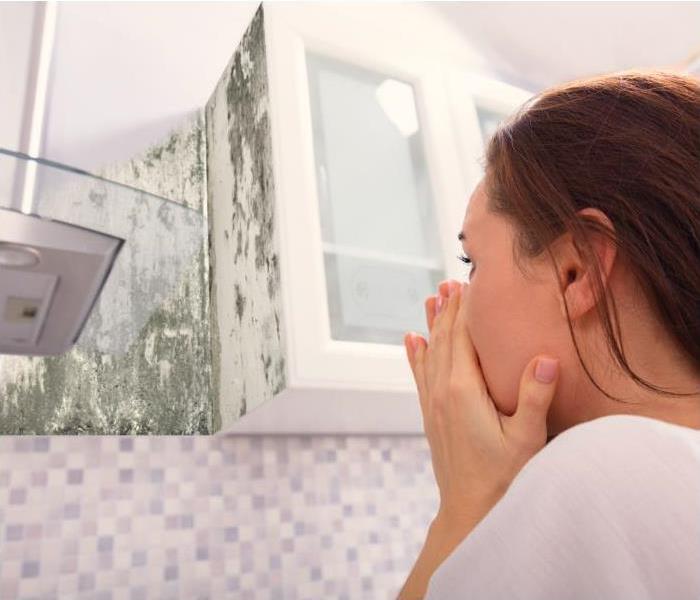 Prevent Mold Growth in Park City, UT
Prevent Mold Growth in Park City, UT
Water damage can be a homeowner's worst nightmare, and when it occurs, the risk of mold growth becomes a significant concern. Salt Lake City, UT, with its unique climate and topography, presents specific challenges when it comes to dealing with water damage and preventing mold. In this comprehensive guide, we'll explore effective strategies to safeguard your home and belongings from mold growth after water damage in the Salt Lake City area.
Understanding the Salt Lake City Climate:
Salt Lake City experiences a semi-arid climate with hot summers and cold winters. This climate variation can contribute to water damage through factors like heavy snowfall followed by rapid thaws, flash floods during summer storms, and occasional plumbing issues. These diverse scenarios require tailored approaches to prevent mold growth effectively.
Immediate Actions after Water Damage:
The first 24 to 48 hours are crucial when it comes to preventing mold growth after water damage. Quick and decisive actions can significantly impact the outcome. Here's a step-by-step guide on what to do immediately:
Safety First:
Ensure everyone's safety by turning off the electricity and gas supply to the affected area. If the water damage is extensive, it's advisable to evacuate until professionals deem the area safe.
Stop the Water Source:
Identify and stop the source of water leakage or flooding. This could be a burst pipe, a leaking roof, or flooding from heavy rains.
Remove Excess Water:
Use pumps, wet/dry vacuums, or buckets to remove standing water. The faster you can extract water, the less likely mold will have a chance to develop.
Ventilation:
Open windows and doors to facilitate air circulation. This helps in drying out the affected areas and preventing mold spores from settling.
Remove Wet Items:
Move wet furniture, carpets, and personal belongings to a dry area. Salvage what you can, and discard items that are beyond repair.
Use Dehumidifiers:
Deploy dehumidifiers to reduce the moisture levels in the air. Lower humidity inhibits mold growth, making it a crucial step in the prevention process.
Drying Out Your Home:
Once you've addressed the immediate concerns, the next step is to thoroughly dry out your home. In Salt Lake City, where cold winters can complicate the drying process, it's essential to be diligent in this phase:
Professional Drying Equipment:
Consider hiring professionals with industrial-grade drying equipment. These experts can ensure that even hard-to-reach areas are thoroughly dried, reducing the risk of mold growth.
Focus on Building Materials:
Pay special attention to structural elements like drywall, insulation, and wooden structures. These materials can retain moisture, providing an ideal environment for mold if not adequately dried.
Flooring Considerations:
Carpets, especially if saturated, can be a breeding ground for mold. If possible, remove and replace them. Hardwood floors may also need specialized drying techniques to prevent warping.
Inspection for Hidden Moisture:
Perform a thorough inspection to identify any hidden pockets of moisture. This may involve using moisture meters and infrared cameras to detect moisture behind walls or under flooring.
Preventing Mold Growth:
With the initial cleanup completed, it's time to implement preventive measures to ensure mold doesn't take hold. In Salt Lake City's climate, where humidity levels can vary, these steps are crucial:
Proper Ventilation:
Ensure that your home is adequately ventilated. Use exhaust fans in bathrooms and kitchens, and consider installing a whole-house ventilation system. Proper ventilation helps control humidity levels, reducing the likelihood of mold growth.
Monitor Humidity Levels:
Keep an eye on indoor humidity levels, especially during seasons with higher humidity. Aim for humidity levels between 30-50%. Use dehumidifiers if necessary.
Regular Inspections:
Perform regular inspections of your home, especially in vulnerable areas like basements and attics. Look for signs of water leaks, condensation, or dampness. Address any issues promptly.
Waterproofing:
Invest in waterproofing measures, such as sealing cracks in the foundation and walls. This can prevent water from seeping into your home, reducing the risk of future water damage.
Landscaping Considerations:
Ensure proper grading around your home to direct water away from the foundation. Keep gutters clean and in good condition to prevent water from overflowing and causing damage.
Proper Storage:
Store items in areas less prone to water damage. Elevate belongings in basements, use water-resistant storage containers, and avoid storing items directly on the floor.
Professional Assistance:
In some cases, especially with extensive water damage, seeking professional assistance is the best course of action. Professional restoration companies in Salt Lake City have the expertise and equipment to handle large-scale water damage effectively. They can conduct thorough assessments, provide a comprehensive plan for cleanup and drying, and offer preventive measures to safeguard against mold.
Water damage is a significant concern for homeowners in Salt Lake City, UT, given its unique climate and topographical challenges. However, with prompt action, thorough drying, and preventive measures, you can minimize the risk of mold growth and protect your home and belongings. By understanding the specific needs of your region and implementing the strategies outlined in this guide, you can navigate the aftermath of water damage with confidence, ensuring a safe and mold-free living environment for you and your family.
Everything You Need To Know About Removing Shower Mold
3/21/2022 (Permalink)
 Learn More About Removing Shower Mold by Following These Tips.
Learn More About Removing Shower Mold by Following These Tips.
Shower mold is a disgusting reality. The smell and appearance are repulsive and agreeable to neither residents nor guests. Rid yourself of this mess the moment it appears and stop further growth. Here's a practical guide to eradicating fungal invaders.
Understanding Types of Shower Mold
Before cleaning your shower of mold, know what type you have. The categories of mold that exist include:
Black mold, also known as Stachybotrys is among the most concerning and demands caution. Wear protective gloves and breathing apparatuses for safety's sake. As soon as you notice the problem, refuse to allow anyone to use the facility. If you feel unsure about removing it properly yourself, hire a mold remediation specialist to do it for you.
Creating a Mold Removal Solution
You can use a homemade solution to take care of a moldy bathroom. One of the best is nothing fancier than white vinegar. Head to your local grocer in Park City, UT, and pick up a bottle. No dilution is necessary. It smells a bit, yet the aroma usually disappears within a couple of hours.
Borax is another effective option. Mix one cup with a gallon of water, then funnel the solution into your spray bottle. You can find what you seek in the laundry section of most stores.
Bleach should be a last resort. While effective at killing mold, care is necessary. Mix with plenty of water, and stay vigilant that children and pets do not touch it. Always keep the room well ventilated when using bleach.
Using Your Mold Removal Solution
Spray your solution on mold everywhere it appears. Exercise discretion and do not use so much that excessive liquid pools beneath. Avoid injury from slips by wearing shoes with rubber soles or staying on your knees.
Take a clean, dry cloth, and wipe down the affected area. The mold should come off without a problem. Alternatively, use a sponge designed for the task. Mold in certain areas may require extra effort. Employ a scrub brush to extract fungi from crevices between tiles and within hard-to-reach corners. Keep this tool nearby in case you missed any mold and growth returns.
Use a toothbrush on grout. Back and forth motions are advisable for best results. Rinse the brush as you clean to reduce the possibility of spreading spores.
Drying the Cleaned Area
Take a cleaning cloth, and sop up any remaining wetness. This task picks up bits of mold that have been scrubbed loose in addition to drying everything. Further, it lowers the odds of black mold coming back to haunt you. Swap out the cloth you're using for a fresh one once it becomes overly saturated or filthy. As a finishing touch, cover mold stains with commercially available caulking.
Ridding yourself of shower mold is vital for living in a comfortable home. Thankfully, the task does not require excessive struggle. Without a doubt, you will feel happier once invasive growths no longer haunt your washroom.
Use Containment Methods To Prevent Cross-Contamination During Mold Remediation
11/11/2021 (Permalink)
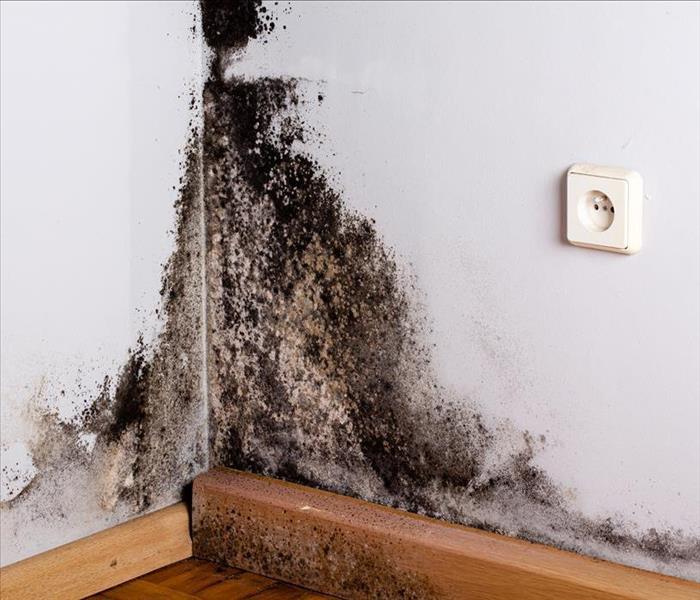 Clean mold as soon as possible to get it under control and avoid further damage in your Salt Lake City, UT commercial building.
Clean mold as soon as possible to get it under control and avoid further damage in your Salt Lake City, UT commercial building.
A safe mold cleanup job at your Salt Lake City, UT commercial building begins with installing the proper means of containment. This step is fundamental in ensuring that the mold spores from the affected area are not carried into unaffected regions of the building (i.e., cross-contamination). If you opt to tackle the job yourself, it's vital to know the proper containment measures to use for your specific issue. Your best bet is to hire reputable, certified mold remediation professionals to perform the work because they have the expertise and industrial-grade equipment to handle it appropriately and with the most safety. In addition to containment, the restoration team should use other equipment such as air scrubbers to help purify the air throughout the cleaning process.
4 Types of Containment Methods Used for Mold Remediation
Depending on what type of mold contamination you have at your office and its severity, there are various options for containment.
One or a combination of multiple types of containment may work best for your specific situation, such as:
Create a Negative Air Chamber
A negative air chamber utilizes ventilation systems to create airflow in the affected area without allowing the air to escape the room. The air and its tiny particulates are prevented from traveling through the ventilation system. Therefore, the spores are contained in the negative air chamber, narrowing the problem to a single location.
Perform a General Cleanup
Isolation isn't limited to just containing an area and its contents. Discarding unsalvageable damaged items is also a very effective mold cleanup method. Tear out water-damaged porous materials, such as drywall, carpeting, and baseboards. Then, carefully place the destroyed materials in thick trash bags and seal them securely. You should take these bags outside immediately.
Seal the Work Area With Plastic Sheeting
Thick plastic sheets can create a barrier between the contaminated area and the rest of the building. This isn't the most dependable way of preventing cross-contamination. Therefore, it's best to combine it with at least one other containment system. It's also essential to restrict traffic to the affected area to remediation workers only, if possible.
Install High-Efficiency Particulate Air Filters
Some air filters are made specifically for capturing mold spores and other tiny air particulates. These filters are very beneficial for isolating the problem by catching the spores before they have a chance to grow and reproduce. Filters, such as the HEPA variety, must be extremely fine so they can capture spores and other tiny particles from the air. It's best to look for products recommended by mold experts to ensure you get the best result while resolving your issue.
When you discover a mold contamination problem at your workplace, you need to immediately take action to get it under control. The issue will only get more severe with time, and it can get out of hand quicker than you may realize. Whether you are doing the mold cleanup job yourself or hiring experts to do it, it's helpful to know about the various containment procedures. Understanding the details of these kinds of problems before you are personally affected by them can help you if you ever experience such an issue.
Is Fungus Cleanup Covered by Your Commercial Insurance?
9/8/2021 (Permalink)
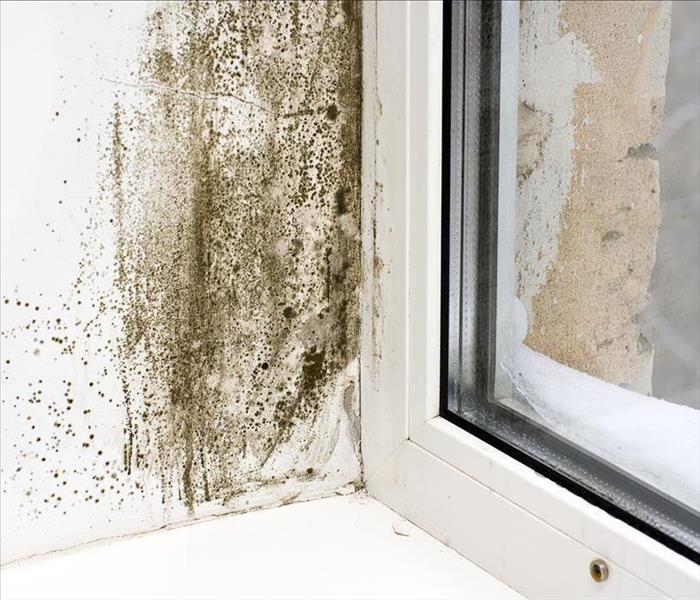 The mold cleanup will not be covered by the insurance if it is a negligence case in your Salt Lake City, UT commercial property.
The mold cleanup will not be covered by the insurance if it is a negligence case in your Salt Lake City, UT commercial property.
It doesn't take much time for a water disaster to transform your commercial property from normal daily functioning to impossible to operate. Unfortunately, leaky pipes, storm damage, and backed-up toilets cause much more than an immediate inconvenience. High levels of humidity or a small puddle of water that soaks, unnoticed, into the carpeting can create the perfect environment for mold growth. The good news is that your commercial insurance provides coverage under most circumstances. The bad news is that many policies have a significant exclusion for losses or damage caused by fungus.
Understanding the Fungus Exclusion in Your Commercial Insurance Policy
Many commercial insurance policies have exclusions related to the pollution, fungi, and bacteria present in Category 3 water. If this exclusion is present in your insurance policy, you may have a coverage gap.
What Is Fungus?
Fungus and fungi are broad terms used in the insurance industry to describe many contaminants:
- Mold
- Mildew
- Mushrooms
- Spores
- Toxins
- Yeasts
- Any by-products left by any type of fungus
The fungus exclusion means that damage such as dry rot, bad smells caused by the presence of fungi, and the spread of fungus throughout your Salt Lake City, UT, property doesn't fall under your standard commercial property insurance coverage.
Why Isn't Fungus Covered?
Mold damage is generally covered if it happens because of "a common peril." These situations may include a pipe break or some overflow from your malfunctioning air conditioner, for example. This type of damage is covered because it was caused by the sudden presence of water.
Damage is not covered when the insurance company can show that negligence or flooding was the culprit. If, for example, a fixture under a bathroom sink has been seeping water for several years, the resulting mold growth won't be covered. If certain rooms on your property are consistently humid and you haven't used a dehumidifier, your policy may not cover the resulting damage. These are examples of negligence.
If heavy storms lead to flooding and water from that storm travels across the ground before moving through your property, causing mold growth, the damage probably won't be covered unless you have a specific flood or mold insurance policy.
Is There a Solution?
Some insurance providers offer Limited Fungus Coverage. This policy has many limitations. There is often an amount limit tied to one occurrence in your policy year. It may cover the removal and replacement of moldy building materials, such as drywall and insulation. The coverage may pay for testing to ensure that there's no remaining trace of contamination. Additionally, the policy only kicks in if you can show that you have taken all reasonable precautions to protect your Salt Lake City, UT, property from damage.
Are You Worried About Your Coverage?
If you're worried about damage from mold growth on your property, your commercial insurance may cover the cost of hiring cleanup and repair professionals. However, there are certain exclusions that may complicate the claim. Make sure you understand the details of your coverage before damage happens, so you can avoid frustrating delays and limited coverage when any type of water disaster affects your building.
Mold and Mildew: Do the Differences Matter?
6/28/2021 (Permalink)
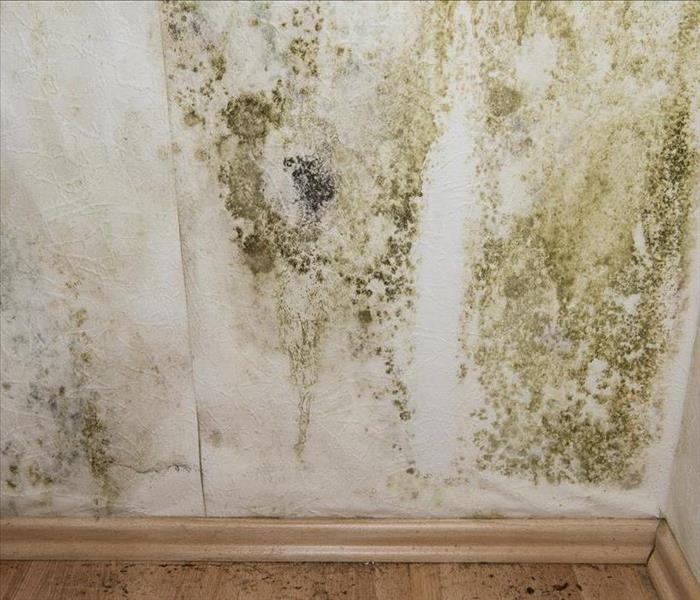 Mold damage in Salt Lake City, UT.
Mold damage in Salt Lake City, UT.
It is important to understand the difference between mold and mildew before addressing a mold damage problem in your Salt Lake City, UT, home:
- Mildew is often used as a generic term that refers to a variety of molds and fungi, but mildew has distinct characteristics of its own.
- Mold refers to all microscopic fungi with a multicellular filament form.
- Mold is one type of fungus. Other forms of fungi include yeasts and mushrooms.
While there are beneficial applications of mold, you certainly don't want to find any growing in your shower, on your walls, or anywhere else in your home.
Mold and Mildew
Similar Beginnings, Different Problems
Mold and mildew growth is encouraged by the presence of moisture, oxygen, and a food source. The two problems have distinct and visible differences. Mold may originally look like dirt. It comes in a variety of dark shades, including green, red, and black. Mold damage often has a fuzzy appearance. Mildew, however, has a light white or gray appearance initially, turning brown as it grows. It has a flat profile, appears powdery, and shows up shaped like small dots. Mold growth tends to be more problematic than mildew because mildew causes surface damage, but mold eats into wood, paper, carpeting, and other surfaces.
Prevention Techniques
Fortunately, it is pretty easy to prevent the growth of mold or mildew. Look for problem areas in your home. If you have rooms or corners that don't get a lot of sunlight, that retain moisture, and that have limited ventilation, there's a potential for damage. The presence of dirt and other debris can increase the risk of mold or mildew, so address this issue as well.
Effective Solutions
It's easy to confuse mold and mildew, but when you have a mold damage problem, it's important to know what you're dealing with to provide an appropriate solution. The best option is to contact mold and mildew cleanup and remediation professionals. These experts have the training, tools, and experience to handle the problem effectively.
What Is mold?
3/19/2021 (Permalink)
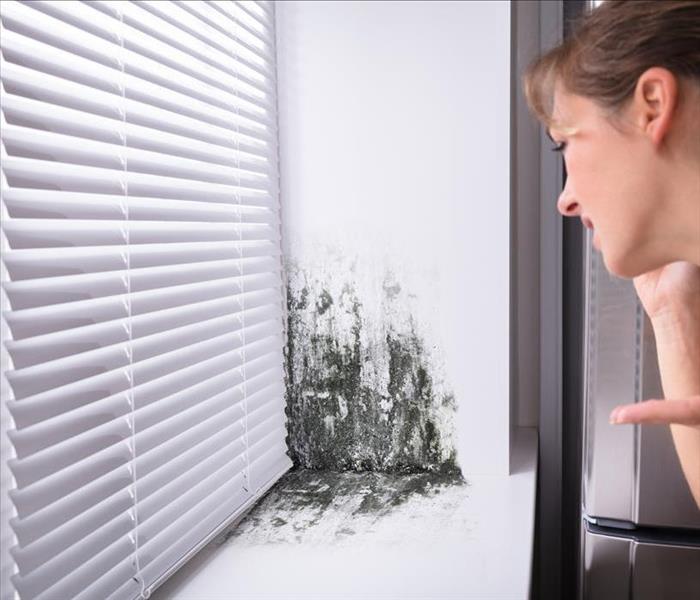 Mold thrive in places with high moisture.
Mold thrive in places with high moisture.
Most homeowners are familiar with the type of mold that grows on their shower curtain or the food that has been in the fridge for too long. However, when stories about black mold started making the news, many people became much more concerned about it. This is a brief overview of what mold is.
Facts About Mold
What Mold Is
Mold is a kind of fungus. Mold can live almost anywhere but tends to thrive in places with high moisture. Small amounts of mold are present in most environments but do not become problematic until they begin to rapidly reproduce due to changes in the environment, such as a moisture problem, that promote their growth. Mold can be one of several different colors:
- Black
- Orange
- White
- Green
- Purple
Where Mold Grows
Mold can grow on floors, walls, appliances, carpet or furniture. It tends to grow more rapidly in moist conditions, which makes mold more common in bathrooms, laundry rooms, kitchens, crawl spaces and basements. However, black mold and other types of mold can also become a problem in homes with water damage from floods, severe storms or leaks, which makes prompt water remediation an important defense against mold problems after water damage has occurred.
Mold Prevention Tips
One of the most effective ways to avoid mold problems is to promptly address any moisture issues in your home. If your home has water damage, contact a professional in Salt Lake City, UT, to remove the source of the water and dry out your home. If you find mold growth, the earlier mold cleanup is done, the better chance you have to prevent the problem from spreading throughout your home.
Black mold and other types of fungus can cause severe property damage when left untreated. However, you can mitigate this problem by quickly eliminating sources of excess moisture and promptly removing existing fungus issues in your residence.
Keep Mildew Out of Your Bathroom
1/25/2021 (Permalink)
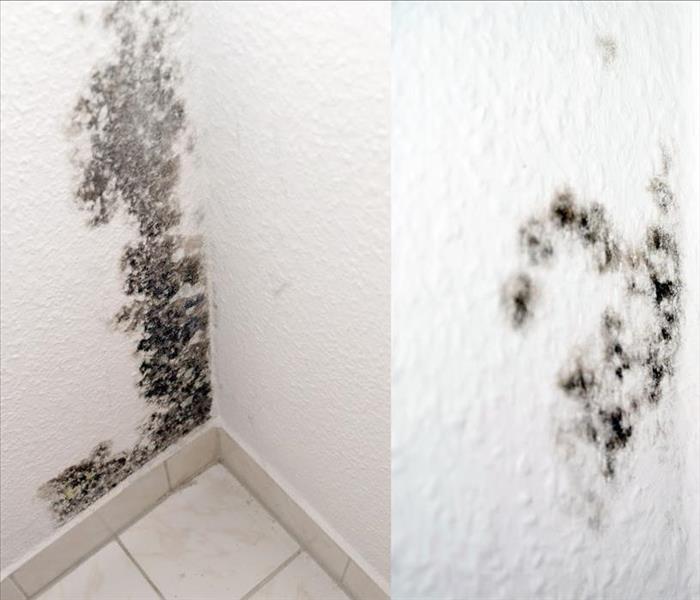 Prevent bathroom mildew or mold
Prevent bathroom mildew or mold
Whether you live in an area where humidity is a consistent problem or you only occasionally deal with excess moisture, knowing how to prevent mold growth is vital to preventing mold from growing in your Salt Lake City, UT, bathroom.
Prevent Mold Growth in Your Bathroom
The first step is identifying the main causes of your humidity problem:
- It's normal to enjoy the feeling of a hot shower with plenty of steam, but this lack of proper ventilation is one of the leading causes of mildew growth. It's best to run a fan, leave the bathroom door open when showering, or open an outside window.
- Make sure that the people showering in your home don't leave damp towels lying around or neglect to air dry the shower rug.
- At least once a week, it's important to clean the toilet and shower with commercial cleaners.
- The deterioration of tiles, grout, and floorboards allows moisture to get behind the walls and under your flooring. Keep a close eye on your grout. Some experts recommend replacing shower grout once or twice a month.
Make it a habit to reduce moisture and humidity in the bathroom to discourage new growth.
Identify Existing Trouble
If you already have evidence of mold or mildew, take steps right away to clean and correct it. The most common types of bathroom mildew or mold include Aspergillus, Cladosporium, and Stachybotrys (or black mold.) Because it is hard to know which type of mold is present, it's best to hire water damage cleanup professionals to test for and get rid of mold. Professionals have access to equipment and supplies for testing which types of mold are present and determining how widespread the mildew has grown.
Repel Mold Growth
Mold loves to grow in warm, damp areas, and the environment in bathrooms is often very inviting for floating spores. In addition to providing this inviting atmosphere, the bathroom also has plenty of hidden nooks and crannies where mold spores can settle and support new colony growth.
The first steps for preventing bathroom mildew include increasing ventilation, removing wet clothing and towels, and replacing damaged grout.





 24/7 Emergency Service
24/7 Emergency Service







